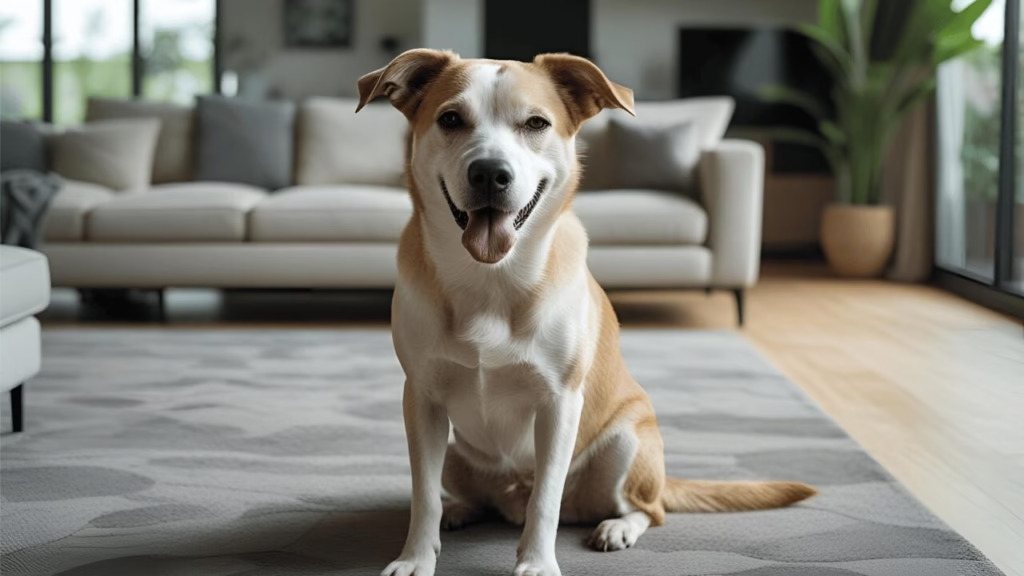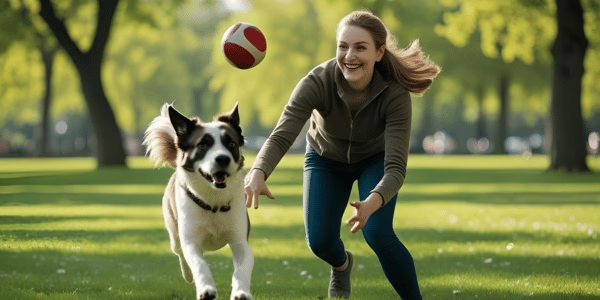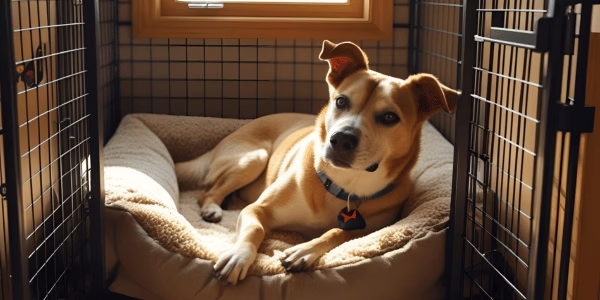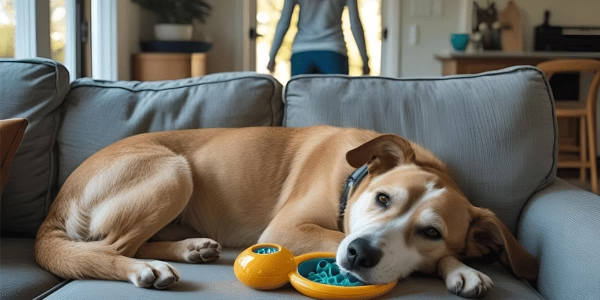If you’re frustrated with your dog chewing furniture, digging holes in your yard, or destroying items around the house, you’re not alone. Destructive dog behavior is one of the top reasons pet owners seek professional help. But here’s the good news: it’s almost always fixable.
This comprehensive guide explores 10 effective, humane training techniques to stop dog destructive behavior. Backed by experts and rooted in positive reinforcement, these methods can help restore peace in your home—and give your dog the structure they need to thrive.
Why Dogs Engage in Destructive Behavior
Before jumping into solutions, it’s critical to understand why dogs act destructively in the first place. Dogs aren’t being “bad”—they’re trying to meet a need.
Common triggers of destructive behavior:
- Separation anxiety – stress when left alone.
- Boredom – lack of mental and physical stimulation.
- Teething – in puppies, this causes chewing pain relief.
- Under-exercising – pent-up energy needs an outlet.
- Lack of training – dogs haven’t learned the “rules.”
- Attention-seeking – destructive acts get reactions.
- Fear/stress – such as thunderstorms or new environments.
Identifying the root cause will make your training far more effective. Let’s break down the top 10 techniques that help stop these behaviors for good.
1. Meet Their Physical Exercise Needs Daily
A tired dog is less likely to destroy things. One of the top causes of unwanted behavior is simple: not enough physical activity. Some breeds—like Border Collies, Australian Shepherds, Huskies, and Labs—have especially high exercise needs. Without daily outlets, they’ll burn energy by chewing, digging, or pacing.
How much exercise does your dog need?
- Small breeds: 30–45 minutes daily
- Medium to large breeds: 60–120 minutes daily
- High-energy breeds: 90+ minutes minimum
Exercise ideas that also engage their mind:
- Structured leash walks
- Fetch or tug-of-war in the yard
- Off-leash play in secure parks
- Hiking or swimming (breed-permitting)
According to VCA Animal Hospitals, physical activity reduces anxiety, improves sleep, and directly lowers the chance of destructive behaviors.
2. Build a Mental Enrichment Routine
Dogs don’t just need to run—they need to think. Mental stimulation is as important as exercise and prevents behaviors like digging, barking, and chewing. When dogs are bored, they invent games—often destructive ones.
Top enrichment activities:
- Puzzle feeders and toys
- Snuffle mats (hide kibble inside!)
- DIY treat hide-and-seek
- Training new tricks
- Interactive tug/fetch toys
Enrichment keeps your dog engaged even when you’re away. Rotate toys weekly to avoid boredom. As dogs mentally tire, their destructive urges shrink.
3. Crate Train the Right Way
When introduced correctly, a crate becomes a dog’s safe space. It also prevents destructive behavior when you’re not home. However, improper crate use can backfire and increase anxiety.
Crate training basics:
- Use a crate that’s big enough for your dog to stand, turn, and lie down.
- Place cozy bedding and safe toys inside.
- Feed your dog meals in the crate to build a positive association.
- Leave the door open initially so they explore it voluntarily.
- Start with short crate sessions (5–10 minutes), then gradually increase.
Never use the crate for punishment, and avoid crating dogs for longer than 4–6 hours during the day. Puppies may need even shorter periods.
Learn more in our Crate Train Your Puppy detailed guide.
4. Redirect Chewing to Safe, Approved Toys
Dogs love to chew—it’s a natural behavior. But they need to learn what’s appropriate and what’s off-limits. Rather than scolding your dog for chewing shoes, redirect them to something better.
Best redirect toys:
- KONG Classic (fill with frozen peanut butter)
- Benebone Wishbones for heavy chewers
- Nylabone chews for teething puppies
Tips to succeed:
- Catch and redirect in the moment—timing matters.
- Reward with praise and treats when they chew the right item.
- Keep multiple chew toys in each room.
The ASPCA recommends using redirection and management over punishment for chewing issues.
5. Teach the “Leave It” and “Drop It” Commands
Obedience training reduces destructive behavior by giving your dog alternative responses. Two of the most effective cues are “Leave it” and “Drop it.” These commands teach impulse control and can prevent damage to property—or even save your dog’s life.
Training “Leave It”:
- Hold a treat in your closed hand and say “Leave it.”
- When your dog stops sniffing, mark with “Yes!” and reward from the other hand.
- Repeat, building up to items on the ground and longer wait times.
Training “Drop It”:
- Give your dog a toy and let them hold it.
- Say “Drop it” and offer a high-value treat.
- When they drop the toy, praise and treat.
These commands are vital for redirecting mid-behavior and establishing house rules.
6. Create a Calm Departure Routine to Reduce Separation Anxiety
If your dog acts destructively only when you’re gone, separation anxiety is likely the cause. Dogs with this issue feel panicked when left alone, which leads to chewing, digging, or scratching.
Signs of separation anxiety:
- Chewing windowsills, doors, or baseboards
- Destruction within 10–30 minutes of your departure
- Excessive barking, pacing, or drooling
- Accidents in a fully house-trained dog
How to train for independence:
- Start with brief absences (1–5 minutes).
- Leave calmly—don’t make a big deal out of it.
- Use enrichment toys like a LickiMat or stuffed KONG during departures.
- Gradually increase time away as your dog stays relaxed.
In severe cases, consult a vet or behaviorist. Calming aids like Adaptil diffusers may help ease transitions.
7. Provide Interactive Feeders and Toys
Instead of serving food in a bowl, make your dog work for meals. This mimics natural foraging instincts and relieves boredom that often fuels destructive behavior.
Feeding alternatives:
- Stuffed KONGs (freeze them for longer sessions)
- Puzzle feeders
- Snuffle mats for dry kibble
- DIY cardboard box treat games
When meals take 15–20 minutes instead of 30 seconds, dogs feel more mentally satisfied and less likely to chew or destroy items out of boredom.
8. Dog-Proof the House Strategically
While you’re training your dog, it’s smart to limit their access to temptation. The fewer chances they have to destroy something, the more successful you’ll be.
Dog-proofing steps:
- Use baby gates to block off rooms
- Keep shoes, cords, and trash hidden
- Put away children’s toys or items that look like dog toys
- Use bitter deterrents like Grannick’s Bitter Apple Spray
Preventing destructive behavior is much easier than trying to fix habits after they’re formed.
9. Use Technology to Monitor and Engage
Can’t supervise your dog all day? Technology can help fill the gap. Smart devices give you control, interaction, and visibility from afar.
Useful tools for training and supervision:
- Furbo Dog Camera – talk to your dog, toss treats remotely
- Petcube – video monitoring + 2-way audio
- Wickedbone Smart Toy – self-moving toy that entertains when you’re gone
Pair tech with training—not as a substitute, but a reinforcement tool.
10. Enroll in Professional Obedience or Behavior Classes
If you’ve tried all of the above with little success, or your dog’s behavior is escalating, it’s time to bring in professional help.
What to look for in a dog trainer:
- Uses positive reinforcement (no e-collars or dominance theory)
- Certified by CCPDT, APDT, or KPA
- Offers behavior consultations, not just obedience
Professionals can detect subtle triggers and develop a custom plan based on your dog’s breed, personality, and environment. For extreme cases, seek a veterinary behaviorist.
Common Behavior Problems and Matching Solutions
Use this reference table to match the behavior you’re seeing with the most likely cause—and the best training technique to solve it.
| Destructive Behavior | Likely Cause | Training Technique |
|---|---|---|
| Chewing furniture/shoes | Boredom, teething | Redirect to chew toys + mental stimulation |
| Digging holes in the yard | Excess energy, boredom | Increase exercise + enrichment toys |
| Scratching doors/windows | Separation anxiety | Desensitization + calming tools |
| Shredding bedding/toys | Frustration or stress | Crate training + routine |
| Counter-surfing | Lack of boundaries | Obedience commands + supervision |
Final Thoughts: Your Dog Isn’t “Bad”—He’s Communicating
Destructive behavior is how dogs communicate unmet needs. It might say, “I’m bored,” “I’m stressed,” or “I don’t understand what you want.” Instead of punishment, the solution lies in proactive training, enrichment, and clear communication.
By combining these 10 techniques consistently, you can create a peaceful home and build a stronger bond with your dog. Don’t wait for the behavior to get worse—start today.
Remember, patience and repetition are key. Real change can take weeks, but the result is a calm, confident, and well-behaved companion






